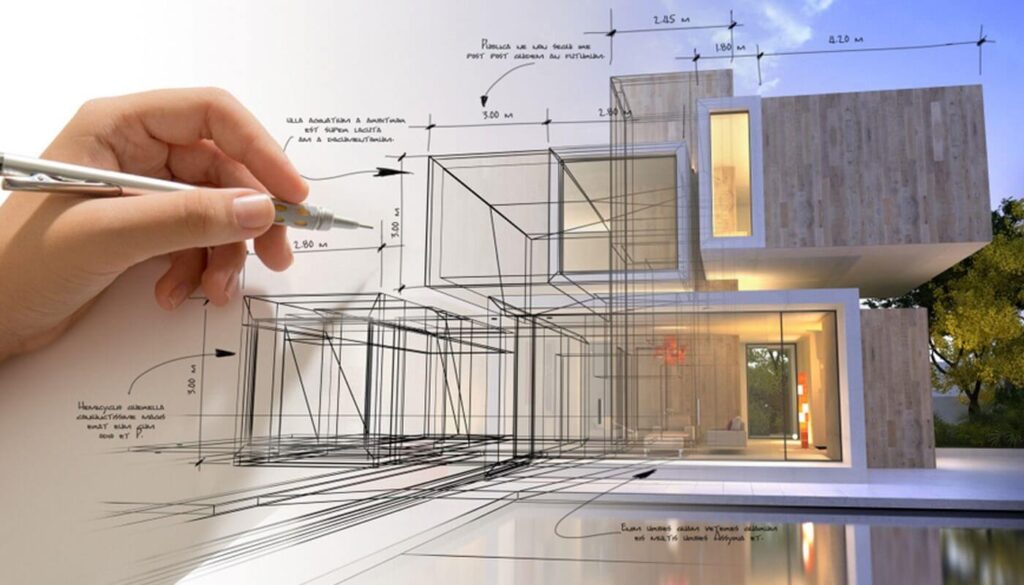Just How CDA Architects Deliver Cutting-Edge Solutions for Lasting Architecture
Just How CDA Architects Deliver Cutting-Edge Solutions for Lasting Architecture
Blog Article
Understanding the Collaborative Refine Between Architects and Designers in Modern Building And Construction Projects
The joint procedure in between architects and engineers is crucial in modern building jobs, as it harmonizes style intent with engineering feasibility. Checking out these characteristics exposes understandings that might substantially affect task outcomes and overall sector criteria.
The Value of Cooperation
The joint harmony between architects and designers is essential for the effective understanding of any type of building task. This collaboration combines distinct experience and point of views, making it possible for the integration of ingenious layout with useful engineering services. By working together, architects and designers can ensure that a job not only fulfills visual and functional requirements but additionally complies with safety and security, sustainability, and financial constraints.
Partnership promotes a common vision, promoting the positioning of goals and expectations from the start. This placement is crucial in attending to possible obstacles and mitigating dangers that might occur throughout the project lifecycle. A joint approach allows for the effective allocation of resources, enhancing both time and price.
The value of collaboration reaches the iterative procedure of design and building and construction, where comments from engineers can inform building decisions, causing more practical and lasting styles. Conversely, engineers can motivate engineers to think creatively concerning how to attain architectural integrity without endangering artistic intent. Ultimately, the collaborative relationship in between engineers and engineers is not simply advantageous; it is essential to the development of top notch, practical, and innovative developed atmospheres that satisfy the needs of society.
Communication Strategies and Tools
Efficient interaction strategies and devices are essential for cultivating partnership between engineers and designers throughout the job lifecycle. Developing clear channels of interaction is important to ensure that all group members are straightened with task objectives, timelines, and duties. Normal conferences, both in-person and virtual, provide possibilities for stakeholders to discuss progress, address problems, and make informed choices.

Additionally, embracing joint communication tools, such as Slack or Microsoft Teams, permits immediate messaging, data sharing, and ongoing conversations, promoting a much more agile reaction to arising concerns. Record management systems also play a critical role in organizing project documentation, making sure that all group participants have accessibility to the most recent info.
Shared Goals and Task Vision
A merged task vision offers as the foundation for effective collaboration in between engineers and designers (cda architects). This common vision not only lines up the initiatives of both events yet also develops a typical framework for decision-making throughout the job's lifecycle. By articulating clear goals, stakeholders can effectively browse the intricacies of modern-day construction jobs, guaranteeing that both visual and functional requirements are fulfilled
Developing common objectives entails open discussion and a complete understanding of each discipline's payments. Engineers commonly focus on design intent, spatial connections, and individual experience, while engineers highlight structural stability, systems functionality, and conformity with laws. When these viewpoints are aligned, the outcome is a natural project that complies with both imaginative ambitions and technical feasibility.
Moreover, a well-defined job vision fosters liability amongst group members, encouraging each individual to take ownership of their duty in achieving the desired outcome. Regular check-ins and collective workshops can additionally reinforce this commitment, permitting changes to be made as the task develops. Ultimately, a common vision not just improves team effort however likewise raises the top quality of the final deliverable, causing effective project completion.
The Duty of Technology
Leveraging modern technology has actually become essential in improving partnership in between engineers and designers. Structure Info Modeling (BIM) stands out as a pivotal modern technology, permitting both designers look at more info and engineers to produce in-depth 3D designs that encapsulate style intent and structural stability.
Moreover, cloud-based platforms make it possible for smooth cooperation, allowing project stakeholders to access and upgrade job information from anywhere. This fosters a society of transparency and responsibility, as adjustments can be tracked and reviewed in real-time. In addition, mobile applications further enhance communication, providing on-site groups with instant access to job specs and updates.
Arising innovations such as artificial knowledge and artificial intelligence are also beginning to play a function in anticipating analysis, helping groups recognize prospective problems before they occur. Eventually, the function of technology in architecture-engineering partnership not only boosts operations performances however likewise enhances development, causing even more successful her comment is here project end results. By embracing these technical advancements, architects and engineers can guarantee a more natural and productive joint process throughout the building and construction lifecycle.
Study in Successful Partnerships
Numerous study show the extensive influence of efficient partnerships between designers and engineers on job outcomes. One remarkable example is the cooperation on the High Line in New York City, where landscape designers, engineers, and metropolitan coordinators worked with each other to change a deserted rail line right into a vivid public park. This multidisciplinary strategy not just enhanced the aesthetic quality but also made certain structural safety and security and environmental sustainability.
:max_bytes(150000):strip_icc()/Buildingdesigns-GettyImages-912482942-db55b3af711044a3a42ad1040c6711a9.jpg)
The Burj Khalifa in Dubai further shows the relevance of collaborative efforts - cda architects. The combination of style and design expertise enabled the job team to achieve extraordinary heights while adhering to safety policies and visual vision
These examples underscore the importance of communication, depend on, and shared purposes. In today's complicated building environment, such collaborations are important to browsing difficulties and supplying tasks that meet both practical and visionary objectives.
Conclusion
In final thought, the collaboration between engineers and engineers is essential for the success of contemporary building you could try this out jobs. Reliable interaction techniques, a shared job vision, and the combination of innovative innovations are crucial components that promote this collaboration.
Report this page